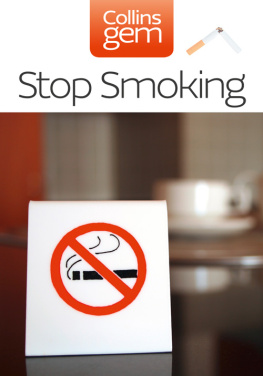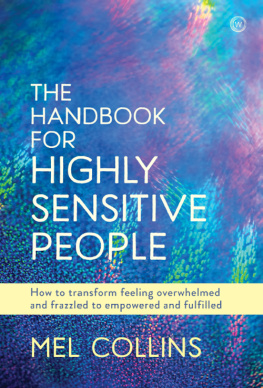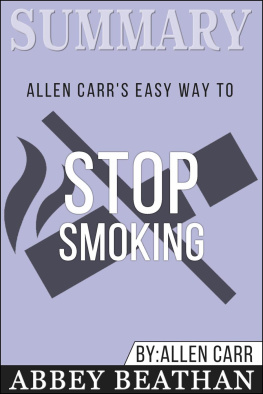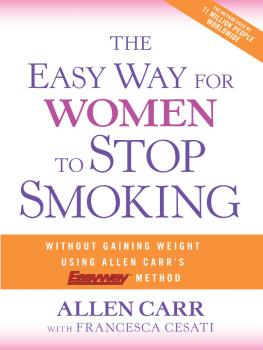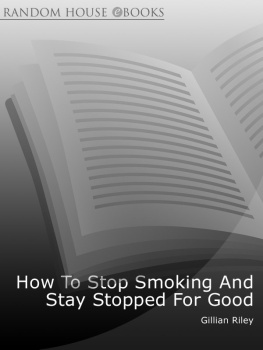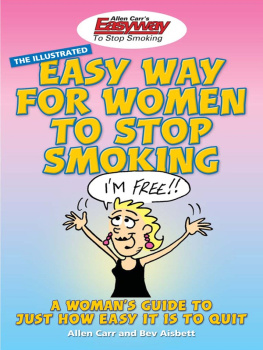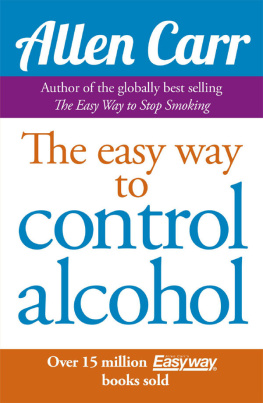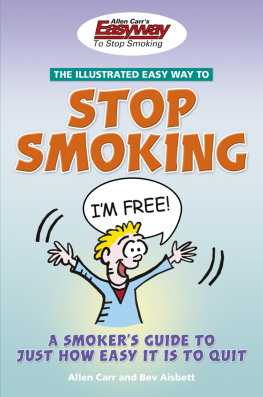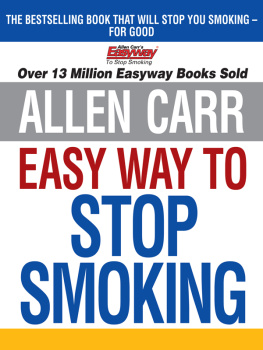

Stopping smokingand staying stoppedis a challenge. According to surveys, the vast majority of smokers would like to stop but most will try an average of six times before they finally succeed. The good news is that no matter how addicted you think you are, it can be done. There are millions of ex-smokers in the US to prove it, and they cant all have superhuman willpower, extraordinary strength of character, and nails bitten down to the quick. If you choose the right method for you, it may not even be difficult at all. The aim of this book is to help you find the easiest way to get free of your nicotine habit, and stay free for the rest of your life.
Every smoker has their own reasons for smoking and their own fears about quitting, so in this book youll be given the tools to create an individual plan that takes into account your physical and psychological profile, giving you the best chance of success next time you decide to quit. Even if you have smoked 40 a day for the last 40 years, it neednt be a struggle to quit if you find the right method. In fact, it is often harder for the occasional social smoker or one-a-day smoker to let go than it is for a chain-smoker. Nicotine leaves the body completely within a few days, so the physical withdrawal wont take long, but a psychological connection that links cigarettes with reward or stress relief or peace and quiet is harder to break. But dont worry. There are lots of very successful ways to break that mental link.
There are almost as many methods to quit smoking as there are to lose weight. Like the diet industry, the quit-smoking industry churns out bestselling books, videos, and tapes or CDs offering advice and tips; there are numerous websites, courses, support groups, and telephone helplines available to reinforce your decision; your doctor or pharmacist can supply nicotine replacements to help you through the first weeks; and complementary medicine has a wide range of suggestions to ease the process.
However, not all quit-smoking aids will work for everyone. For example, if you only tend to smoke when you are upset or stressed, you dont need nicotine replacement therapies; if the psychological approach offered by quit-smoking gurus like Allen Carr and others appeals to you, they advise that you dont combine it with any other method; and some techniques seem to work better for men than women (and vice versa).
Even if youre not ready to give up right now, its still worth reading through the sections, thinking about why you smoke and which methods you would consider when you do try to quit. Plant the seeds in your brain. If youve quit before and then relapsed, try to remember as much as you can about the pressures that made you light up again, so that next time you can avoid them. By choosing methods youve never used before, combined with any that have been helpful in the past, you can give yourself extra ammunition. And if this is your first attempt to quit, choose your plan carefully and you could be one of the lucky 20% who succeed first time.
Part 1 explains how to devise your plan, while Part 2 outlines the main techniques you could choose from. Some of the techniques can be combined while others cant, and youll find advice on compatibility within the descriptions, along with information on how to find a therapist or group. There are some general principles to help you select the technique that will work for you, but you should make up your own mind about which ones to try based on your self-knowledge and instincts. If one appeals to you, why not give it a try? Youve got nothing to loseexcept your smoking habit.
Part 3 has advice on how to stay a nonsmoker, and what to do if you relapse. Dont ever give up quitting! If you keep trying, using different methods each time, you will get there in the end. Its always better to try and fail than not try at all. Even if you only manage a single day without puffing, youve given your system a mini-break and youve proved that you can do it. And if youve managed a day, you might make two or three days next time and thenfinallythe rest of your life.
Good luck!
To understand what happens when you quit smoking, it helps to know the way your body reacts when you smoke. Why not light a cigarette and smoke it while you read this section, to identify the physiological responses you can feel? Try and imagine the ones you cant actually sense. It may be easier to distinguish individual sensations if you do this with a first-thing-in-the-morning cigarette, or the first one youve had in a few hours, rather than the next in a chain.
If you are a pipe or cigar smoker, or you prefer chewing tobacco or taking snuff, the advice in the book still refers to you, but your physical responses will be focused more on the mouth and throat than the lungs.
Ready? Light up now.
Within ten seconds of taking the first drag on a cigarette, pipe, or cigar, nicotine droplets are absorbed through the soft tissues of the mouth and throat. Within ten to nineteen seconds, the nicotine begins affecting the brain, causing the release of adrenaline. Adrenaline is a hormone that the body normally releases at times of stress, to put you on high alertready to stand your ground and fight, or to flee from the danger. You produce adrenaline before going in to write an exam, or if you are approached by a knife-wielding mugger in the street. Within a minute of taking the first drag, adrenaline causes your heart to beat faster. Within ten minutes, the rate can rise by as much as 30%. Can you feel this effect? Some smokers refer to this as the buzz. Adrenaline also narrows the blood vessels in the skin and intestine so that extra blood can reach the muscles, allowing you to run fast if you have to.

